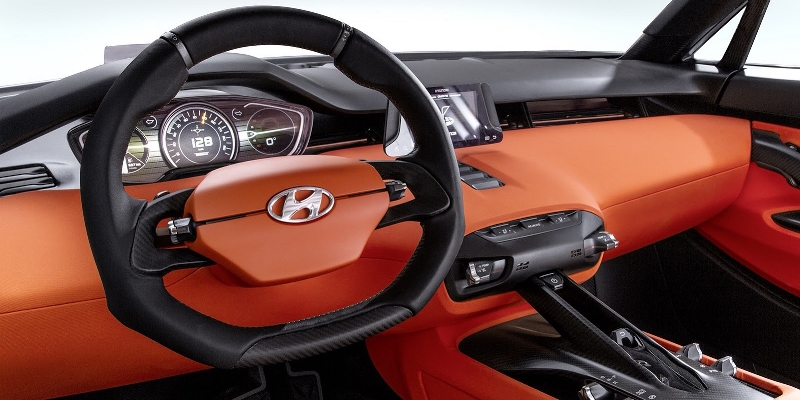Hyundai has released the first images of its all-new groundbreaking Intrado Crossover Concept, which could be Hyundai’s first hydrogen production car.
After releasing a few teaser images last month, the South Korean automaker Hyundai has finally released the first batch of official photos of the all-new revolutionary Hyundai Intrado Concept Crossover.
There are two reasons that makes this Crossover Concept really special.
First, is the possibility that the model could end up being Hyundai’s first bespoke hydrogen production car. And second reason, is the fact that the Concept is the first model to feature Hyundai’s all-new Fluidic Sculpture 2.0 design language.
The Hyundai Intrado Crossover Concept will officially be presented to the public at upcoming 2014 Geneva Motor Show in March.
The man behind the stunning looking Crossover Concept is Mr Peter Schreyer, who for a long time was making cars from the Kia brand look cool. The high-riding Crossover Concept was designed and engineered at Hyundai’s technical centre in Frankfurt and while, it was under development, the model was internally referred to as HED-9, a give-away that it is the ninth concept car from Hyundai Europe Design. Design president Peter Schreyer says it has been designed “from the inside out: to put the driver at the centre of the driving experience; to be perfect in an ergonomic sense; and to provide a genuinely multi-purpose ownership experience – capable enough to suit an active lifestyle, small enough to park in the city, but comfortable and efficient over long distances.”
The aerodynamic-looking fuel cell Crossover Concept features more focused, narrow front lights, a deeper and more three-dimensional grille and distinctive wheel arches, which are partially detached from the front bumper and visually appear to frame the car’s front, with a little nod to the Aston Martin ONE-77. Perhaps more important than this new aesthetic direction is the revolutionary new chassis structure that underpins its svelte shape. It features a patent-pending pliable soft woven carbon fibre tubing system that can be bent into more flexible shapes than conventional steel or carbon fibre and is filled with four slugs of resin to then make it hard and rigid (looking akin to a grey Battenberg cake in cross-section).
Crucially, Hyundai says the new approach should save considerable weight, cost and manufacturing complexity and could reduce the cost of future hi-tech production cars within a few years (notably on its second-generation of fuel cell vehicles). Due to its high rigidity the clever chassis material also allows the designers to dispense with a B-pillar between the front and rear passenger seats to improve vehicle access. On the inside, the Intrado Concept’s cabin appears to be sporty and restrained. Notable highlights include a sport steering wheel, a digital instrument cluster and a freestanding infotainment system. There’s also a unique centre console and carbon finer trim.
Coming to the groundbreaking technology part, Hyundai’s latest concept will feature the second generation hydrogen fuel cell powertrain, which is rated to give around 587 kilometres of range. This new hydrogen fuel cell system is said to be smaller and lighter than the one used in the Hyundai ix35 Fuel Cell. Under the bonnet is the Hyundai’s proprietary fuel cell stack and electric motor, which drives the front wheels.
Converted and scavenged power is stored under the driver’s seat in a 36kWh lithium-ion battery, while the car’s supply of hydrogen is carried in high-pressure tanks under the back seats and boot floor. Hyundai claims that this new drivetrain technology coupled with the ultra lightweight structure of the Concept has made the model 70 per cent lighter than an equivalent vehicle made of steel. The company even claims that the said construction approach could one day be put into use on its mass market vehicles.
Hyundai brand European design chief Thomas Burkle explained the Intrado’s primary mission as “engaging with a generation of younger buyers with active, spontaneous and opportunistic lifestyles.
They are sceptical about the car industry as it is, but respond to objects they associate with pure, functional beauty rather than decorative form.
These objects – whether they’re mountain bikes, high-end consumer electronics or designer hand tools – represent the next generation of premium product.”





